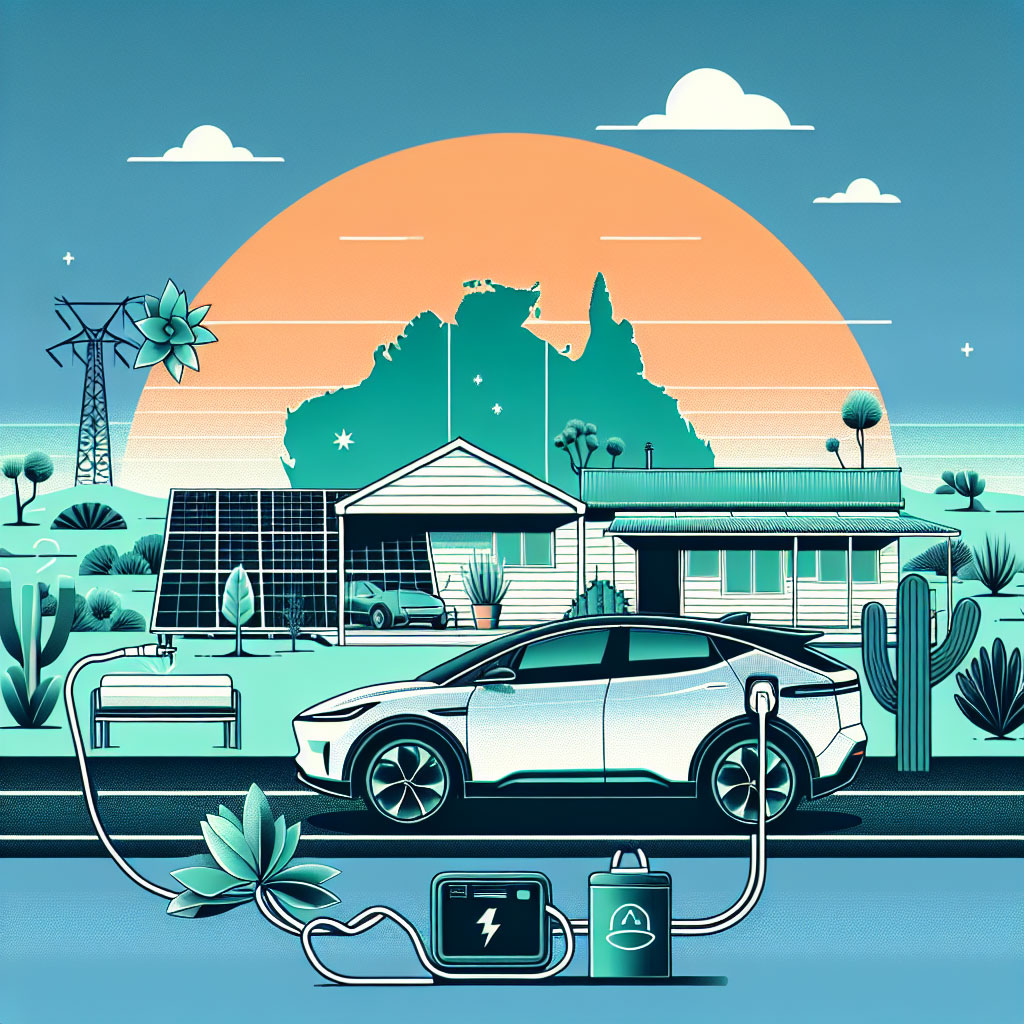
Australia’s transition to electric vehicles is entering a new phase: owners could soon be paid to feed energy back into the grid as vehicle-to-grid (V2G) trials move from lab to driveway. Energy retailer AGL has launched a national trial of bi-directional charging in partnership with automakers and aims to move to a wider customer rollout as soon as 2026, subject to approvals and the outcome of testing.
What the AGL trial involves
AGL’s program will test bi-directional charging with 50 electrified vehicles – a mix of battery-electric vehicles (BEVs) and plug‑in hybrids (PHEVs) – over 12 months. Hyundai, Zeekr, Kia and BYD are participating in the trial to ensure that warranties won’t be invalidated for vehicles used in testing. A further 50 participant slots will be available to owners who already have, or are willing to buy, AGL‑approved bi-directional chargers.
Participating drivers will receive a discounted bi‑directional charger and be able to earn credits toward future energy bills – including power and gas – by exporting energy from their car battery to the grid during specified high‑demand periods. AGL’s software gives users control over when their car charges and when it must be fully charged for driving, enabling owners to prioritise mobility while accessing export opportunities.
Why V2G matters
V2G differs from vehicle-to-home (V2H) systems by exporting power to the broader electricity network rather than limiting it to a single dwelling. For grid operators, aggregated car batteries are a flexible resource that can:
- Provide load balancing and frequency control during short-term disturbances;
- Reduce peak demand pressure, lowering wholesale prices and network stress; and
- Support higher shares of intermittent renewables by storing surplus solar and wind generation and returning it when needed.
For drivers, the benefits are twofold: cheaper net energy costs by charging in off‑peak windows and earning export credits during system peaks, and greater resilience where a vehicle can act as a home backup in extended outages when paired with the right hardware.
Regulatory and industry context
Australia already has early regulatory movement on V2G. Mitsubishi became the first automaker to have models legally permitted for V2G in Australia – its Outlander and Eclipse Cross PHEVs were approved in May 2024. The broader rollout of V2G at scale will depend on further work between retailers, distribution networks, and bodies such as the Australian Energy Market Operator (AEMO) and state regulators to refine metering, settlement and safety rules.
Globally, V2G pilots have shown technical feasibility and grid benefits, but widespread adoption requires interoperable standards (such as developments around ISO 15118 for smart charging communication), approved bi‑directional hardware, and commercial arrangements that fairly compensate owners and network providers alike.
Technical realities and practical considerations
Owners curious about getting paid for V2G should understand practical constraints and trade-offs:
- Vehicle and charger compatibility: Not all EVs or chargers support bi‑directional power flow. Historically, CHAdeMO supported early V2G pilots; CCS and smart‑charging standards are evolving to enable bi‑directional functions more widely. The AGL trial focuses only on approved vehicles and chargers to protect warranties and ensure safety.
- Battery cycling and degradation: Repeated charge/discharge cycles can contribute to battery wear. Trials and manufacturer agreements aim to manage charge depth and cycles so that the incremental degradation is minimised. Automakers participating in trials typically provide warranty protections for approved use.
- Earnings and savings: Payments will vary depending on the tariff design, frequency and duration of export events, the battery size, and how often the vehicle is available. For many households, V2G credits are likely to offset a meaningful share of electricity costs – potentially a few hundred dollars a year – but outcomes will vary widely.
- User control and convenience: Smart software allows owners to prioritise mobility (for example, ensuring a full charge by 7am) and to set preferences for how aggressively their car participates in exports.
- Installation and safety: Bi‑directional chargers must be professionally installed and comply with Australian electrical safety standards. Householders should only use AGL‑approved or manufacturer‑endorsed equipment in commercial programs.
- Data, privacy and cybersecurity: As with any networked device, V2G systems collect operational data. Program participants should be clear about what data is shared, how it’s used, and the protections in place.
Market outlook for Australia
Australian EV uptake continues to climb: by August 2025 EVs had reached about 7.6 per cent of new vehicle sales, according to recent figures, and the national fleet is only set to grow. Industry voices see enormous potential: Julie Delvecchio, CEO of the Electric Vehicle Council, notes that vehicle batteries collectively represent a substantial, largely untapped energy resource.
If trials such as AGL’s succeed, V2G could be a valuable tool to manage grid peaks, reduce household bills, and create new revenue streams for EV owners. However, scalability depends on coordinated regulatory changes, retailer offerings that balance incentives and costs, and broader consumer confidence. AGL’s stated aim of a customer rollout in 2026 sets a clear timeline, but that remains contingent on approvals and positive trial outcomes.
What owners should do now
- Check vehicle and charger capabilities: Confirm whether your make and model supports bi‑directional charging or if manufacturer guidance allows participation in trials.
- Watch for approved hardware lists: Only use chargers and installers authorised by program providers.
- Evaluate your driving patterns: V2G pays best where vehicles are regularly parked and plugged in during daytime peak periods or when the grid needs support.
- Consider solar pairing: Combining home solar with V2G can enhance export value and self‑consumption strategy.
- Read the fine print: Understand warranty protections, data sharing, and the terms of any export credits or tariffs.
Conclusion
AGL’s national V2G trial marks a significant step in Australia’s EV journey – shifting private vehicles from mere consumers of electricity to active participants in the energy system. If trials confirm technical performance, protect batteries and deliver clear financial benefits, V2G could become a mainstream way for Australians to lower energy costs, support renewables and strengthen grid resilience. But mainstream adoption will require coherent regulatory frameworks, interoperable standards, and practical, consumer‑friendly products and tariffs. For Australian drivers considering an EV, V2G is rapidly moving from a niche capability to an important factor in the broader value proposition of electric mobility.
FAQs
What is the difference between V2G and vehicle-to-home (V2H)?
V2G exports power from an EV to the electricity grid, providing services and credits at a system level. V2H supplies power from an EV to a single home, typically to support backup power during outages or reduce household demand.
Will using V2G void my vehicle warranty?
Not if you use manufacturer‑approved equipment and participate in sanctioned programs. Trials such as AGL’s include automaker agreements to safeguard warranties for participating vehicles. Always confirm with your vehicle maker before participating.
How much can I realistically earn with V2G?
Earnings depend on your tariff, the size and availability of your battery, and how often the vehicle exports energy. Many drivers could see meaningful savings (potentially a few hundred dollars annually) but outcomes will vary by location, market conditions and program design.
Are all EVs compatible with V2G?
No. V2G requires bi‑directional power electronics in the charger and vehicle. Some vehicles support it via certain standards; others do not. Check your vehicle manufacturer’s guidance and program compatibility lists.
Is V2G safe for batteries and domestic electrical systems?
Trials and participating manufacturers aim to manage charge profiles to minimise additional battery degradation. Certified installers and approved chargers ensure safe connection to a home and the grid. Nonetheless, battery wear and installation safety are important considerations to discuss with providers.
About EV Evolution
EV Evolution is the leading online platform dedicated to Australian electric vehicle owners and enthusiasts. We foster a vibrant community, delivering essential EV news and insights, and enhancing user engagement through our innovative, AI-powered chatbot for dynamic discussions. Our mission is to empower Australian electric vehicle owners and enthusiasts by fostering a vibrant, AI-driven online community that connects, informs, and advances the nation’s electric vehicle landscape.




